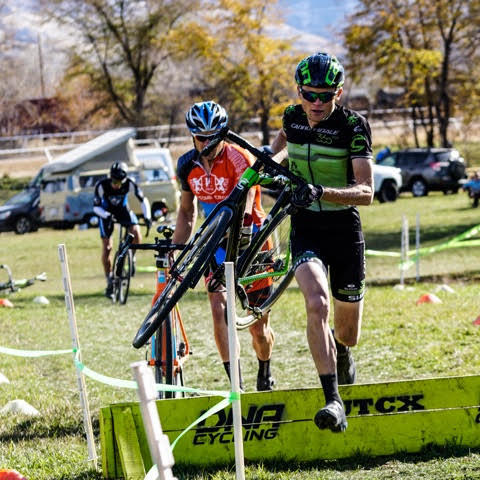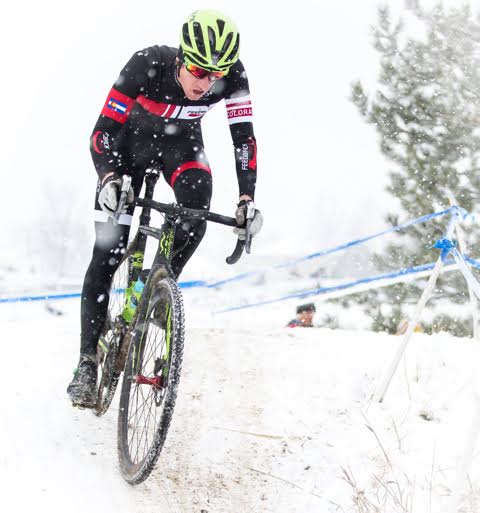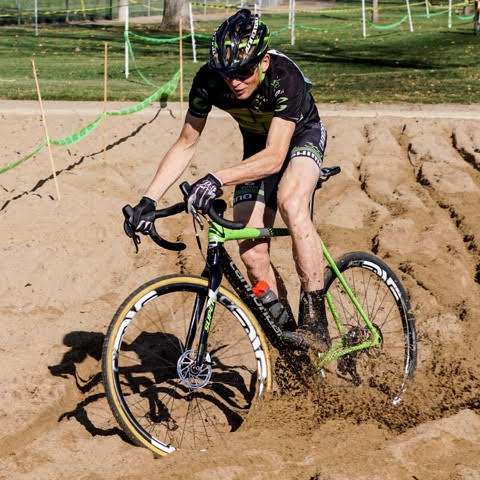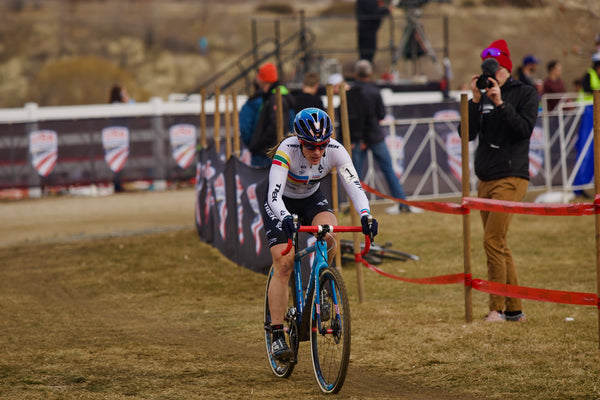If you’re a cyclocross racer, no doubt you’ve joked about the endless season cycle of dumping your race bag into the laundry, washing it (once, or twice!), and then shoving it back into your race bag. Packing for races, traveling, and negotiating race day logistics are some of the biggest challenges in cyclocross racing. Weather conditions contribute to this: mud can contaminate every article of clothing, piece of equipment, and multiple pairs of shoes. Cold temps mean you are wearing lots of layers, and then changing them frequently to avoid sitting in wet clothes. Courses can change from one day to the next, meaning you might want file tread tires one day and mud tires the next.
Even if you’ve worked carefully and diligently with your coach to build up good fitness [see Daniel’s Cyclocross Training 101], you may not get the full benefits of that training if you’re frazzled on race day, if you forget toe spikes when there’s a muddy run-up, or you miss your chance to pre-ride. Planning ahead to anticipate potential race day needs, and dialing in your race day routine, can help ensure that you get the most out of your cyclocross season.

Pre-race planning: Depending on what gear you have available, you will have a variety of decisions to make when planning for a particular race. Weather predictions and course features will affect these decisions, so if you have not raced on a course before, ask someone who has to see if there are any features that would affect equipment choice. Look at the extended forecast to see what precipitation and temperatures are likely - but always bring mud and cold gear in case!
1. Gearing: I generally run a 38T chainring, and 11-32 cassette, but if there are steep, rideable course features, it might be worth swapping in a smaller chainring or larger cassette. If it’s a fast and flat course with a lot of pavement power sections, you might want a bigger chainring.
2. Hot conditions: Nylon knee-high stockings are the best $2.50 you’ll spend! Fill them with ice and tie a knot at the top to make ice socks to stick down your jersey. Or, use a fancy ice vest. Be sure you are hydrating with electrolytes and not just plain water.

3. Mud: What cyclocross racer doesn’t want to be a “mudder?” Muddy conditions are a hallmark of cyclocross racing, but they require more than just mud tires to navigate successfully. Once you have swapped in your mud tires and dialed in your tire pressure, which is likely lower than you would use on a dry course, you want to make sure you mount your toe spikes, use WD40 to spray your cleats and down tube, and plan extra time around pre-riding to allow for washing your bike before starting the race. Bring a laundry bag for your used clothes, and be sure to hose off your outer layers and shoes before you head home to save your washing machine.

4. Cold and/or rain & snow: Probably the toughest conditions for racing cyclocross are a combination of rain and 35-40 degree weather. It’s almost impossible to avoid getting soaked, even if you have rain gear! Once you’re wet, it’s only a matter of time before you get cold. Minimizing the time you spend outside in these conditions is the biggest key here: make your pre-rides efficient, then change immediately and find somewhere dry to hang out before warm-up—your car, a tent, the registration building, etc. In order to have the most comfortable riding experience, here are a few tips:
- Apply embrocation on your legs and feet
- Place plastic shopping bags over your socks before sticking them in your shoes, and then wear waterproof shoe covers
- Wear a pair of latex disposable gloves under your cycling gloves (the other best $2.50 you’ll spend!)
- Put chemical toe warmers in your shoes
- Tape hand warmers to the bottom side of your wrist (where the blood flow is)
- Bring every layer you have including an extra sports bra (ladies) - you’ll always use more than you think
- Vaseline on your cheeks can help prevent cold wind burn
- A shoe dryer, or the cheap alternative: newspaper crumbled and stuffed into your shoes with foot beds removed, will make donning your shoes on day two a much more pleasant experience!
Race-day logistics: Race-day planning involves working backwards from your race time to make sure you have scheduled your pre-rides, number pick-up and pinning, and pre-race fueling.
1. The more you practice a course, the more efficient you will be. Cyclocross is all about preserving momentum - so beyond practicing your cornering, dismounting/remounting and off-camber techniques in training, dialing in your lines on a particular course can help you find the fastest way around the circuit, as well as save mental energy during the race.

Decide whether you'll ride or run any sand pits before the race.
2. Sometimes race schedules get thrown off, so plan for at least two opportunities to pre-ride in case one gets cut short or eliminated. Unless the event plans for a solid block of open course time, this means doing some math and calculating when one race ends and how much time you’ll have until the next race starts.
3. Look for fast people to follow and/or watch around tricky sections of the course. If you can pre-ride with a friend, take the opportunity to simultaneously try different lines around a feature, to compare which is faster.

Is there anyone better to follow during a pre-ride than Katie Compton?
4. Walk the run-ups! No need to tax your legs by running up steep pitches. Low cadence grinding on the bike is going to tire your legs too, so avoid doing too much of it in pre-ride. Focus on getting the flow of the course, trying different lines on tricky sections, and finding the best routes through the corners.
I'm working on a similar plan to help you get your nutrition dialed for cross. Stay tuned!

Crystal practices what she preaches!

Leave a comment